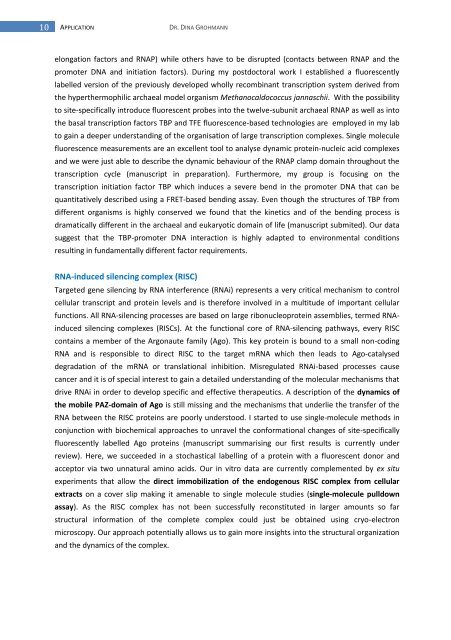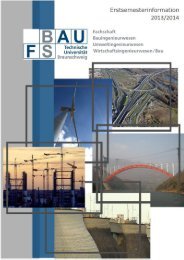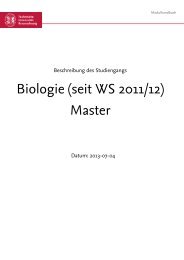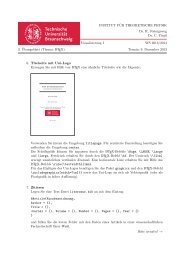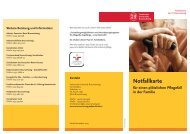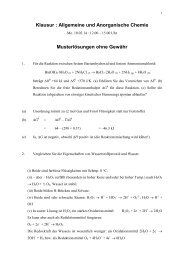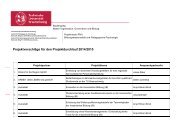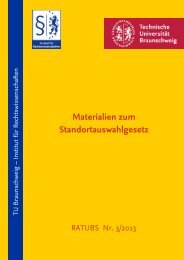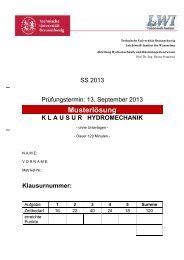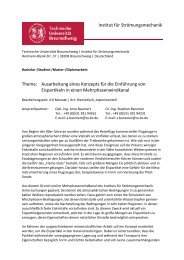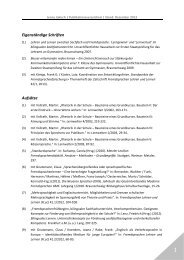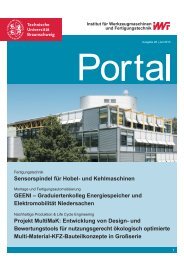L - Technische Universität Braunschweig
L - Technische Universität Braunschweig
L - Technische Universität Braunschweig
You also want an ePaper? Increase the reach of your titles
YUMPU automatically turns print PDFs into web optimized ePapers that Google loves.
10 APPLICATION DR. DINA GROHMANN<br />
elongation factors and RNAP) while others have to be disrupted (contacts between RNAP and the<br />
promoter DNA and initiation factors). During my postdoctoral work I established a fluorescently<br />
labelled version of the previously developed wholly recombinant transcription system derived from<br />
the hyperthermophilic archaeal model organism Methanocaldococcus jannaschii. With the possibility<br />
to site-specifically introduce fluorescent probes into the twelve-subunit archaeal RNAP as well as into<br />
the basal transcription factors TBP and TFE fluorescence-based technologies are employed in my lab<br />
to gain a deeper understanding of the organisation of large transcription complexes. Single molecule<br />
fluorescence measurements are an excellent tool to analyse dynamic protein-nucleic acid complexes<br />
and we were just able to describe the dynamic behaviour of the RNAP clamp domain throughout the<br />
transcription cycle (manuscript in preparation). Furthermore, my group is focusing on the<br />
transcription initiation factor TBP which induces a severe bend in the promoter DNA that can be<br />
quantitatively described using a FRET-based bending assay. Even though the structures of TBP from<br />
different organisms is highly conserved we found that the kinetics and of the bending process is<br />
dramatically different in the archaeal and eukaryotic domain of life (manuscript submited). Our data<br />
suggest that the TBP-promoter DNA interaction is highly adapted to environmental conditions<br />
resulting in fundamentally different factor requirements.<br />
RNA-induced silencing complex (RISC)<br />
Targeted gene silencing by RNA interference (RNAi) represents a very critical mechanism to control<br />
cellular transcript and protein levels and is therefore involved in a multitude of important cellular<br />
functions. All RNA-silencing processes are based on large ribonucleoprotein assemblies, termed RNAinduced<br />
silencing complexes (RISCs). At the functional core of RNA-silencing pathways, every RISC<br />
contains a member of the Argonaute family (Ago). This key protein is bound to a small non-coding<br />
RNA and is responsible to direct RISC to the target mRNA which then leads to Ago-catalysed<br />
degradation of the mRNA or translational inhibition. Misregulated RNAi-based processes cause<br />
cancer and it is of special interest to gain a detailed understanding of the molecular mechanisms that<br />
drive RNAi in order to develop specific and effective therapeutics. A description of the dynamics of<br />
the mobile PAZ-domain of Ago is still missing and the mechanisms that underlie the transfer of the<br />
RNA between the RISC proteins are poorly understood. I started to use single-molecule methods in<br />
conjunction with biochemical approaches to unravel the conformational changes of site-specifically<br />
fluorescently labelled Ago proteins (manuscript summarising our first results is currently under<br />
review). Here, we succeeded in a stochastical labelling of a protein with a fluorescent donor and<br />
acceptor via two unnatural amino acids. Our in vitro data are currently complemented by ex situ<br />
experiments that allow the direct immobilization of the endogenous RISC complex from cellular<br />
extracts on a cover slip making it amenable to single molecule studies (single-molecule pulldown<br />
assay). As the RISC complex has not been successfully reconstituted in larger amounts so far<br />
structural information of the complete complex could just be obtained using cryo-electron<br />
microscopy. Our approach potentially allows us to gain more insights into the structural organization<br />
and the dynamics of the complex.


